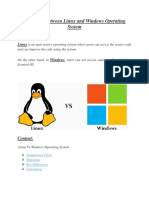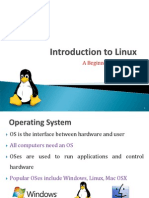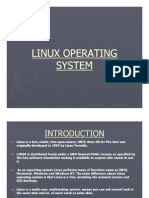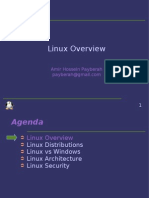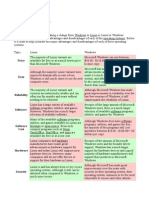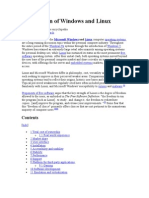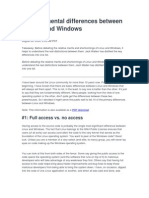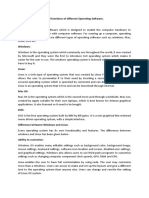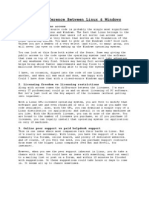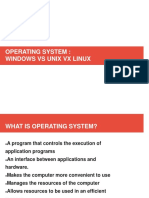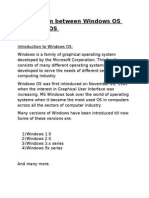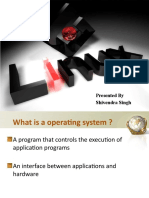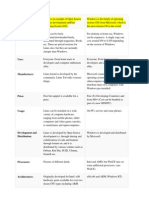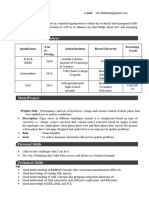0% found this document useful (0 votes)
10 views3 pagesLinux Vs Windows
This document provides a comparative study of Linux and Windows, highlighting key differences in system architecture, licensing, user interface, security, performance, and more. Linux is open-source, customizable, and excels in security and stability, while Windows is user-friendly, supports a wide range of commercial applications, and has better gaming capabilities. The document concludes with a summary table comparing cost, source code, customizability, security, performance, and ideal user groups for each operating system.
Uploaded by
2023bit026Copyright
© © All Rights Reserved
We take content rights seriously. If you suspect this is your content, claim it here.
Available Formats
Download as PDF, TXT or read online on Scribd
0% found this document useful (0 votes)
10 views3 pagesLinux Vs Windows
This document provides a comparative study of Linux and Windows, highlighting key differences in system architecture, licensing, user interface, security, performance, and more. Linux is open-source, customizable, and excels in security and stability, while Windows is user-friendly, supports a wide range of commercial applications, and has better gaming capabilities. The document concludes with a summary table comparing cost, source code, customizability, security, performance, and ideal user groups for each operating system.
Uploaded by
2023bit026Copyright
© © All Rights Reserved
We take content rights seriously. If you suspect this is your content, claim it here.
Available Formats
Download as PDF, TXT or read online on Scribd
/ 3








